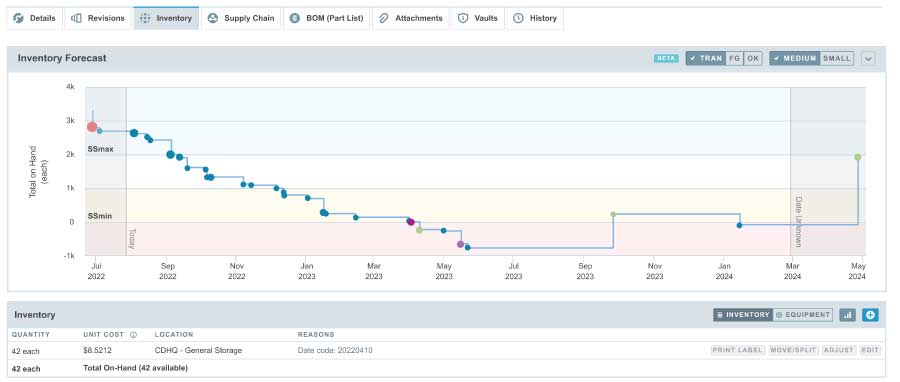The use of safety stock is an inventory management strategy to ensure there are enough parts, components, and supplies available at all times. It works by setting minimum levels of parts and materials in inventory that are used as signals to quickly replenish stock when needed. The safety stock acts as a buffer between production, consumption, and lead times. Retaining inventory safety stock also provides manufacturers with flexibility against unexpected demand or supply issues.
Without proper safety stock planning, a manufacturer runs the risk of having too little inventory on hand. This situation could lead to costly lost orders, increased customer wait times, or expensive production downtime events. On the other hand, maintaining too much inventory can result in excess expenditures and wasted resources. Proper safety stock calculations are essential for achieving optimum balance between inventory levels and customer satisfaction.

Safety stock quantities are typically calculated based on factors such as historical sales patterns, current demand trends, lead times, and forecasted growth. These calculations are used to determine the ideal amount of safety stock necessary to provide the manufacturer with an adequate buffer to accommodate unexpected changes in demand or supply issues. Once safety stock levels have been established, they should be regularly monitored and adjusted accordingly as market and supply conditions change over time.
Simpler manufacturing operations can calculate their needs by hand or with a spreadsheet. As the complexity in product build, vendor count, and order mix increase, the need for purpose-built PLM and MRP software like Aligni becomes necessary. These systems are designed to manage the greater data and operational needs required of larger manufacturing firms. They can also be integrated into the parts and vendor management processes to collect and maintain the necessary information needed to efficiently manage safety stock levels.
Safety stock plays a key role in inventory operations for manufacturing businesses by providing sufficient buffers against unforeseen fluctuations in demand or supply chain issues. By calculating safety stocks accurately and monitoring them regularly, manufacturers can ensure manufacturers always have enough parts and supplies on hand without wasting money on excess inventory. As such, proper safety stock management has become essential for a manufacturing business to remain competitive and successful.
Managing production inventories can get complex. If you’re looking to get in front of inventory needs, it’s time to sign up for Aligni!
Start your 30-day free trial
Helping You Make Great Things…Better.
